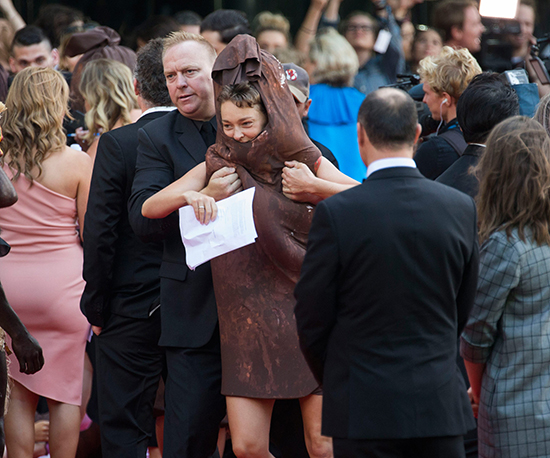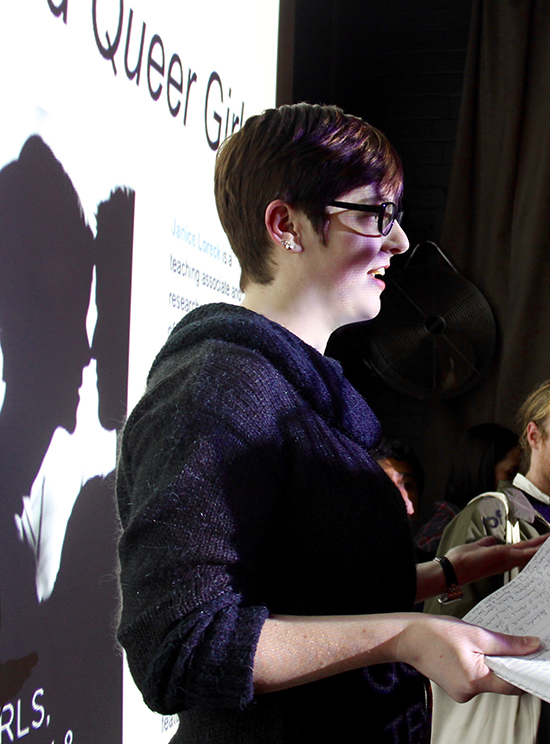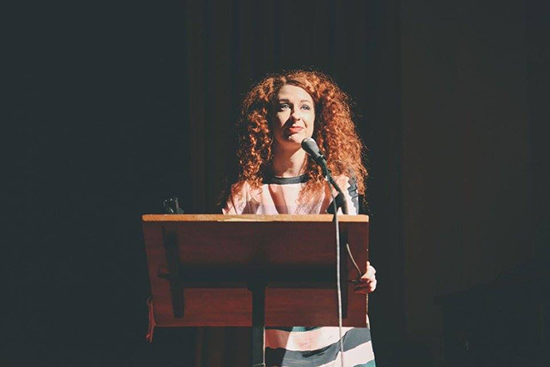Women’s film festivals: breaking the mould
Lauren Carroll Harris: interviews, For Film’s Sake, Melbourne Women in Film Festival

“End the Sausage Party” demonstrator, AACTA Awards red carpet in Sydney, 2016
photo Media-Mode.com
“End the Sausage Party” demonstrator, AACTA Awards red carpet in Sydney, 2016
Gender representation in Australia’s film industry hasn’t improved in 40 years. With dominant industry bodies and policymakers failing to make change, fringe film festivals are gaining the most headway in achieving gender parity. Given the huge failures of establishment players to correct the film industry’s background culture of discrimination, women’s film festivals are now aiming to fill a larger space in the film ecology, going beyond merely exhibiting films by women to supporting the creation of new, more daring works by women.
RealTime spoke with two festivals working in the vacuum left by the commercial film industry players and policymakers. The Melbourne Women in Film Festival launched its inaugural season this past weekend and For Film’s Sake (formerly World of Women film festival) will run 26-30 April in Sydney. FFS attracted infamy last year for its involvement in the “End the Sausage Party” protest which occupied the AACTA Awards’ red carpet, decrying the low number of nominations and selected films driven by female creatives.
For Film’s Sake
“There’s nothing happening on a policy level, and that’s leaving huge gaps between what’s being said [by policymakers] and what’s being experienced [by filmmakers]. We’re moving into film creation as well as exhibition,” says FFS festival director Sophie Mathisen, who has recently quit her job to work full-time on the festival. “The way that it was before, it was just a nothing festival. It wasn’t doing anything, it wasn’t changing anything.” The move from exhibiting films to supporting the production of new films should allow for the festival to have a direct effect. To this end, the new The Big Pineapple program will award a $50,000 micro-production budget to a team in which at least four of the following roles are fulfilled by women: writer, producer, director, cinematographer or lead character. Male filmmakers are encouraged to apply as members of teams that tick at least four female roles. The award also includes funds and support for post-production, marketing and distribution.
Mathisen has worked as a filmmaker within the existing public screen agency and commercial structures, and has found that the barriers to women becoming filmmakers are as present and powerful as ever. “Everyone believes that they will be the lucky one who doesn’t smack up against the glass ceiling. And then suddenly they do. There was no point [in me] continually making films if they’re never seen and there’s no platform for them. We know that women are already working outside the system, so we need to make room for what they’re creating.”
Audience-building
The next step is to attract an audience. Though its main screenings are at Sydney’s Event Cinemas, Mathisen says FFS wants to create interesting cultural events around the films to generate a better audience experience, and engage other moving-image media beyond feature-length films. “We’re doing a program of Small Bar Activations, getting digital art, media, animations, anything that doesn’t fit within a normal theatrical context, some works from Next Wave festival and a gif collective called Loop the Loop, and projecting and installing them in eight small bars throughout the city.
“The big one for us is to change the conversation from the ‘worthiness’ of female filmmakers” by boosting the cultural currency of the films and creating more tantalising film culture events that match the type of film with the type of exhibition setting. “We’re doing the first screening ever at the Chinese Garden of Friendship with two Chinese films; we’re doing a dance film in partnership with the No Lights No Lycra dance community, and we’re doing a six-hour horror marathon in a carpark.”
Unexplored avenues, new models
Mathisen says that festivals, given their independence from the norms of commercial filmmaking, are ideal homes for the unexplored avenues of cinema that women’s participation opens up. The festival will support women who “inhabit entirely new [storytelling] spaces, are more experimental with form and go beyond the normal narrative escalation.” Lower-budget filmmakers in the festival circuit, she has observed, are taking more creative problem-solving approaches by “doing things on the hop. There’s a sense of uncensoredness because the film wasn’t put through the frame of the film school and the templates and rungs of [screen agency-led writing] development.”
In this way, festivals funding production could lead to more daring films by women than the screen agency and film school models. “And they have to, because those other models aren’t working,” says Mathisen. “The existing models are complicit in the perpetuation of women’s invisibility.” Beyond the strictures of male-dominated filmmaking and beyond the industry issue of ending workplace discrimination, new types of films, new types of storytelling and new themes become evident when women have access.

Kirsten Stevens
Melbourne Women in Film Festival
Kirsten Stevens and Whitney Monaghan of Melbourne Women in Film Festival (MWFF) have likewise found that as a small festival, they can program more experimental, feminist, political and queer material that has evaded wide distribution. Stevens doesn’t see this as “niche programming,” given that “[most] people see taste and programming through the prism of a white, hetero, male status quo. It’s not that the stories that women tell are weird and different, it’s that they’re not the stories we have easy access to. It’s not that women’s films won’t speak across gender and sexuality divides, it’s that they haven’t had the chance to be put out there.”
To address this, MWFF has taken a retrospective and alternative approach to programming films that Stevens says, “break the ideas of cinema”, with the aim of calling for contemporary films next year. “We’re looking back to the International Women’s Film Festival in 1975 which was organised in the Year of the Woman, and pulling the Australian films from that program. We read that festival’s manifesto and realised it could all be said today.”
“The session ‘Art and Life’ in this year’s festival played 50 minutes of contemporary, avant-garde and experimental filmmaking by women in Australia,” says Monaghan, who curated that wing of the program. Expanding the festival’s mandate to include a wider spectrum of screen culture, it included video/art films by artists The Kingpins and Soda_Jerk and under-seen shorts, like Gillian Armstrong’s AFTRS Graduate Diploma Student film of 1973, One Hundred a Day (1973; see it here).
“I think film festivals are the ones pushing equity because they can,” says Stevens. “They’re short-term, very focused on a couple of days or a week, and you can put a lot of resources and effort into it and focus the conversation. But no-one wants to talk about it year-round, which is the problem.” Stevens says the measure of success for women’s film festivals will be making equity into an ongoing concern for the industry rather than an occasional burst of talk. “Festivals won’t solve the issue but they can be the pointy end of the wedge.”

Sophie Mathisen
For Film’s Sake – Event Cinemas George St, Sydney, 26-30 April
RealTime will be covering Hobart’s Stranger with My Face International Film Festival (4-7 May), another event dedicated to creating spaces for women filmmakers in the festival landscape. See reviews of previous Stranger with My Face festivals here and here. Eds
RealTime issue #137 Feb-March 2017






